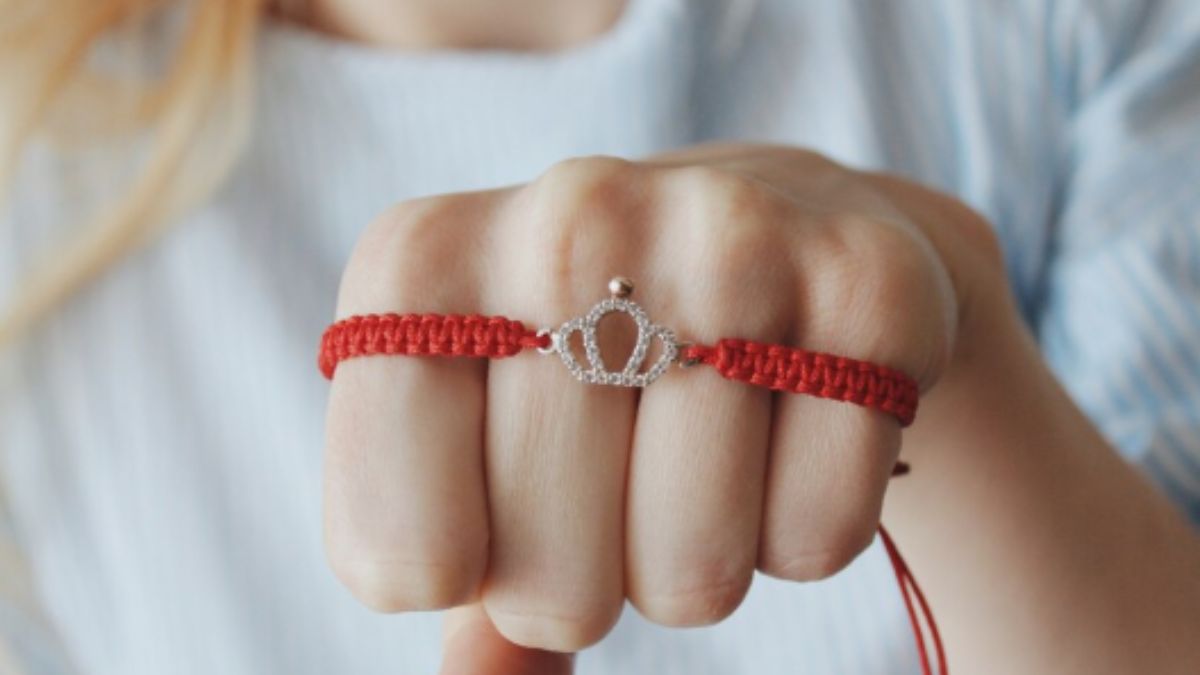Topic
Understanding Dog Behavior: Key Strategies to Prevent Bites

Dog behavior is a fascinating subject that holds significant implications for public safety. Many people fail to realize that by better understanding how dogs communicate, everyone can contribute to decreasing the frequency of dog bites. This knowledge becomes even more critical, considering that bites can lead to both physical harm and legal consequences. In such cases, consulting a Fayetteville dog attack attorney can be vital in navigating the legal complexities that arise.
A dog attack lawyer in Fayetteville focuses on defending people who have been bitten or attacked by dogs, making sure they get the money they are entitled to for their injuries. These attorneys are well-versed in local pet ownership and liability laws, helping clients navigate complex legal proceedings. With their expertise, they work to hold negligent dog owners accountable and advocate for the rights of the injured.
Implementing preventive strategies allows dog owners and communities to foster safer interactions between humans and dogs, often averting serious incidents before they occur. In order to prevent dog bites and to ensure the safety of both people and their furry friends, education is very important. By making small changes, such as learning to read dog signals and promoting community awareness, we can make large strides in enhancing public safety.
Introduction to Dog Behavior
Understanding dog behavior is not just the purview of dog enthusiasts or professionals; instead, it’s a crucial aspect of ensuring public safety in any community. Dogs often communicate through nuanced body language, vocalizations, and tail movements, serving as their primary means of interaction. By observing these cues with a trained eye, we can predict their actions and take steps to prevent potential bite incidents. What seems like a playful bark to an untrained individual might actually be a warning sign of stress or discomfort. This underscores the importance of broadening the general knowledge regarding canine communication.
Common Triggers for Dog Bites
Dogs may bite for diverse reasons, most commonly rooted in fear, the desire to protect, or reactions to pain. For instance, a sudden approach, loud noise, or even direct eye contact can startle a dog, leading to defensive behavior that might escalate into a bite. Recognizing these triggers empowers individuals to anticipate and avoid situations likely to provoke a negative reaction. Finding out what triggers a dog’s discomfort is essential to responsible pet-keeping since it allows for more thoughtful interactions.
Recognizing Warning Signs in Dogs
Before resorting to a bite, most dogs will display clear warning signs. These can include growling, baring teeth, or adopting a rigid stance. Some dogs might even tuck their tails, flatten their ears, or avert their gaze to signal distress. By paying attention to these indicators, individuals can adjust their behavior accordingly, responding appropriately to defuse the situation. Recognizing such subtleties not only prevents bites but also enhances the human-animal bond by fostering mutual understanding and respect.
Effective Strategies for Dog Bite Prevention
Implementing proper training and socialization programs from an early age is a foundational step in preventing aggression in dogs. Obedience training establishes a bond between owner and pet and instills a sense of security, teaching dogs to remain calm in various situations. Additional tools like leashes, harnesses, and muzzles serve as practical measures that provide an extra layer of safety, reinforcing public confidence when interacting with dogs. Moreover, familiarizing dogs with different environments and social situations helps decrease their tendency to react aggressively to unfamiliar or overwhelming stimuli.
Teaching Children Safe Dog Interaction
Due to their size and unpredictable movements, children are more vulnerable to dog bites. Educating them about safe practices, such as asking for permission before approaching a dog, avoiding abrupt gestures, and keeping a gentle demeanor, can significantly decrease bite occurrences. Parents and caregivers should emphasize the importance of respecting a dog’s space and recognizing canine signals, thus promoting safer interactions. Such education equips children with lifelong skills for interacting gently and thoughtfully with animals.
The Role of Dog Owners in Reducing Bite Incidents
Dog owners have a pivotal role in mitigating bite risks, starting with ensuring that dogs are well-trained and appropriately socialized from a young age. This involves exposing them to various sights, sounds, and experiences in controlled measures to build confidence and reduce fear-driven aggression. Furthermore, maintaining regular veterinary care is essential to address health issues that may cause stress or pain, which are often the root causes of biting behavior. By fostering a healthy and balanced environment, owners contribute to the overall safety of their community.
Community Initiatives to Promote Dog Safety
Community programs can significantly raise awareness and provide educational resources on dog behavior and safety. Initiatives such as workshops, free training sessions, and distribution of informative materials can enhance public knowledge and promote safer interactions with dogs. These programs often offer practical advice on handling dog encounters, increasing the general population’s confidence and competence in dog-human interactions. Such initiatives emphasize the importance of spreading awareness about dog safety, drawing from established guidelines, like those from the CDC’s dog bite prevention guidelines, to educate and guide effective practices.
Conclusion: Building a Safer Environment for Humans and Dogs
Understanding dog behavior involves a collaborative effort that includes individuals, educators, and communities at large. By fostering knowledge and adopting preventive measures, society can create a safer, more harmonious environment for both dogs and humans. With collective awareness and proactive strategies, the frequency and severity of dog bites can be significantly reduced, benefiting everyone involved. The goal is to ensure peaceful coexistence, where both humans and dogs feel safe and respected in their shared spaces.
Topic
6 Common Mistakes to Avoid When Setting Up a Gift Registry

When planning a special event, creating a gift registry can make the gift-giving process much easier for the guests. Many people make mistakes that can complicate their experience and create frustration for both themselves and their guests. Learning more about these common pitfalls can help you establish a successful registry. Here are six mistakes to sidestep when setting up your gift registry. Look no further!

Forgetting About the Online Gift Registry Options
There are many websites and online alternatives that offer a wealth of choices for gift registries that are easy to use for everyone. When setting up your registry for a wedding, remember the convenience that online gift registries like https://www.easyregistry.com.au/ can provide in this scenario. Traditional registry options have their charm, but they may limit accessibility for guests living out of town. An online registry allows for greater flexibility, letting guests shop from the comfort of their homes.
Many online registries offer the ability to manage your list easily, track gifts, and even integrate cash gifts. This modern twist brings convenience to both the host and the guests involved. It’s worth considering how an online gift registry might cater to your needs and those of your guests, who can enjoy a more convenient gift-giving experience.
Not Doing Sufficient Research
Creating your gift registry should not be a hasty decision. Take time to research various registry options available, as they each come with their own features and benefits. Check out the costs and the delivery options before selecting the right one for you. Many registries offer different styles, from traditional items to experiences or cash contributions.
Assess what best reflects your personal preferences and lifestyle. Once you compile a list that matches your needs, you’ll be more successful in guiding guests in their choices. When in doubt, look for reviewers and testimonials that can provide more insight into other people’s experiences.
Choosing Limited or Inappropriate Items
A mistake people make is selecting too few items or choosing items that may not be appropriate for guests. When curating your registry, look into a variety of price points. Guests like to have options since your registry will cater to different budgets. If your selections consist solely of high-ticket items, it may discourage loved ones from participating. The best would be to include affordable options, essentials, and even luxury items for guests who want to spend more.
Personalize your choices that resonate with your interests, hobbies, and lifestyle. This way, guests are more likely to feel motivated to choose something meaningful to you. Each guest will find something that fits their budget and supports your vision.
Not Updating the Registry Regularly
One of the primary considerations when managing a gift registry is to keep it updated. Registries change as guests begin purchasing items, meaning you may need to adjust your list to reflect what’s still available. Failing to do so can lead to disappointment for both you and your guests, as they may think they are buying something that is no longer an option.
Regularly log into your registry and review your selections. You can even add some new items to your list to provide fresh selections that can intrigue guests. This ongoing commitment will keep your registry up to date and keep gifts flowing.
Overlooking Personalization and Customization Options
Personalizing your gift registry can add a special touch and improve connections with your guests. Many registries allow for custom messages or photos, making each selection more meaningful. It may be a great idea for weddings, where personalized gifts resonate more deeply than generic ones. Include particular themes, colors, or even styles that reflect your personality to make your registry stand out.
Personalizing your choices brings an element of storytelling into the gift-giving process, inviting guests to be part of your journey. When they connect with the items and their significance, it creates a deeper emotional link and potentially makes their gift-giving experience more rewarding.
Failing to Communicate Your Registry Details
Many registry hosts fail to communicate their registry details effectively. Sending out an invitation or announcement will let your guests know your registry is there. Include information on where to find the registry, what type of items are included, and any options for customization.
Use social media or email to spread the word about your registry. Your guests want to give meaningful gifts and will appreciate knowing how to help you achieve your vision. Clear communication minimizes confusion, promotes wider participation, and allows guests to feel more involved in your celebration. Establishing a gift registry can be a delightful experience if approached with your guests in mind.

Now that you know how to avoid these common mistakes, you can create a registry that meets your needs and adds joy to your celebration. Take the time to reflect on your preferences, personalize your choices, and effectively communicate with your guests to achieve a smooth gift-giving experience.
Topic
Maximize Shop Productivity With These Heavy Lifting Solutions

In any industrial or commercial setting, productivity depends on how efficiently materials and equipment can be moved, positioned, or secured. Whether you’re managing a small repair shop or a large-scale production facility, having the right lifting equipment in place reduces downtime, minimizes injury risk, and keeps workflows consistent. Lifting by hand is both inefficient and dangerous, especially when dealing with repetitive tasks or bulky machinery.
Integrating smart lifting solutions is one of the most reliable ways to create a safer, faster, and more capable workspace.
Understanding the Value of the Right Equipment
Heavy lifting equipment is no longer a luxury for shops with high workloads, but a necessity. Without it, teams face strain-related injuries and slower task completion. Even a simple task, such as relocating a heavy engine part or maneuvering an industrial mold, becomes time-consuming when done manually.
The proper lifting tools are designed to reduce physical exertion while increasing the precision and control of movement. They help operators work smarter, not harder. This improvement affects more than just the person doing the lifting; it changes the pace and flow of the entire operation.
Prioritizing Safety With Every Lift
Investing in lifting solutions is as much about safety as it is about productivity. Improper lifting is one of the most common causes of workplace injury, especially in jobs that involve repetitive movements or heavy equipment. Employers who implement professional lifting systems reduce the physical toll on their teams and promote a culture of safe practices.
Informed buyers often turn to experienced suppliers for advice and solutions tailored to their space. Companies like Heavylift Direct and similar ones provide a wide range of equipment suited to shops of different sizes and industries. Their expertise helps businesses identify the most effective lifting strategies for their needs. Making the right purchase starts with understanding your workflow and identifying areas where equipment can fill gaps or prevent risk.
Overhead Cranes for Large-Scale Operations
In larger shops and warehouses, overhead cranes are game changers. They allow operators to lift and transport heavy loads across wide areas without interfering with floor traffic. By installing rails or freestanding cranes, businesses gain full control over their work area while maintaining valuable floor space for other operations.
These systems also support heavier weight capacities compared to forklifts or manual options. Whether lifting raw materials, machinery, or finished products, overhead cranes provide reliable movement that integrates seamlessly into high-demand environments.
Gantry Cranes for Flexible Lifting
For businesses that need portable lifting options or temporary setups, gantry cranes deliver adaptability. These cranes consist of a frame on wheels or tracks that supports a hoist. Since they’re not fixed to a structure, gantry cranes can be moved around the shop floor or even outdoors as needed.
This flexibility allows teams to perform heavy lifts in multiple zones without requiring multiple cranes. Smaller models are suitable for lifting engines or HVAC units, while larger models can handle containers or pallets. The added mobility enhances shop efficiency, especially in dynamic or project-based environments.
Hydraulic Lifts for Precision Control
Hydraulic lifts offer excellent control for lifting equipment that needs careful handling. Whether adjusting the height of a workstation or raising machinery for maintenance, hydraulic systems allow for incremental movement. Their smooth operation reduces the risk of abrupt shifts or tipping, which protects both equipment and staff.
These solutions are often used in assembly lines, mechanical service bays, and laboratories. They’re particularly useful when a consistent lift height is needed across multiple stations, improving standardization and reducing human error.
Jib Cranes for Targeted Areas
When lifting is confined to a particular workstation or area, jib cranes are one of the most efficient choices. These cranes feature a rotating arm that extends from a fixed point—either mounted to a wall or floor. They allow for targeted lifting within a limited radius, perfect for welding stations, assembly lines, or parts storage.
The compact design of jib cranes makes them ideal for shops with tight layouts. They keep lifting localized without interrupting other workflows or requiring excess floor space.
Forklifts for Versatile Material Handling
Forklifts remain one of the most popular heavy lifting tools for good reason. They’re highly mobile, intuitive to operate, and capable of handling everything from pallet loads to bulky equipment. For shops that frequently receive or ship goods, forklifts streamline logistics by reducing load/unload times and improving material flow.
Even within the shop itself, forklifts make it easier to move supplies from one area to another. When paired with training and maintenance, they become one of the most reliable assets in any industrial environment.
Elevating Efficiency With Hoists
Hoists are often used in tandem with cranes and lifting frames, particularly when vertical lifting is needed. Chain hoists, electric hoists, and pneumatic hoists provide a range of force and control depending on the task. Their mechanical advantage allows a single operator to move loads that would otherwise require multiple people.
Hoists shine in confined spaces and precision tasks where controlled lifting is critical. When overhead height is limited, low-profile hoists still provide a lifting solution that fits within spatial constraints.
Maintenance Matters
No lifting system works well if it’s neglected. Routine maintenance of cranes, lifts, hoists, and forklifts is critical to keeping operations safe and uninterrupted. Worn cables, unbalanced loads, or delayed inspections all create unnecessary hazards. A well-documented maintenance schedule, along with employee training, ensures long-term reliability.
Shops that take lifting equipment seriously often establish dedicated roles or teams for equipment upkeep. Whether it’s weekly checks or annual certifications, small steps taken consistently protect both assets and personnel.

Heavy lifting solutions are more than tools; they’re investments in efficiency, safety, and future growth. The right combination of cranes, hoists, lifts, and forklifts reduces strain, increases speed, and allows shops to function at their highest level. Prioritizing smart lifting strategies today lays the foundation for smoother operations and a more productive tomorrow.
Topic
The Power of a Well-Chosen Bracelet in Your Outfit

Accessories are the secret weapons of fashion. Often small, but with the ability to transform an entire look. Among these, bracelets stand out as one of the most versatile and expressive pieces you can add to your ensemble. A well-chosen bracelet is a statement, a mood setter, and a personal signature all at once. Whether you’re dressing up for a formal event or simply aiming to add a touch of flair to a casual outfit, the right bracelet can elevate your style with subtlety or boldness, depending on your choice. In this blog post, we’ll explore how a bracelet can powerfully influence your outfit, reflecting your personality, enhancing your look, and making your style uniquely yours.

Express Your Personality Through Style
A bracelet can be a window into your personality. Whether you prefer delicate chains, chunky cuffs, or beaded strands, each style tells a story about who you are. For example, someone who opts for a sleek silver or gold bracelet may be conveying elegance and sophistication, while a colorful, handmade beaded bracelet might reflect creativity and a free spirit. This personal expression through bracelets allows you to showcase parts of your identity without saying a word. Mixing and matching different styles can further tell a complex story about your mood or preferences on any given day. A well-chosen bracelet acts as a wearable conversation starter and an extension of your narrative.
Enhance Seasonal and Occasion Styles
The bracelet you choose can reflect the season or occasion, subtly adapting your outfit to the moment. Light, airy bracelets with shells or pastel beads are perfect for summer, adding a beachy, relaxed vibe to your look. In winter, men’s leather bracelets, or those with dark metals, or adorned with gemstones, can lend warmth and luxury. Occasion-specific bracelets, like sparkling diamond cuffs for formal events or colorful woven pieces for festivals, help you blend with or stand out in the right way. By thoughtfully selecting bracelets that resonate with the time of year or event, you ensure your outfit feels intentional and well-considered, demonstrating attention to detail that makes a lasting impression.
Complement Your Outfit’s Color Palette
One of the most practical yet overlooked aspects of choosing a bracelet is how well it complements the colors of your outfit. A bracelet doesn’t have to exactly match your clothing, but thoughtful coordination can tie an entire look together. For example, a warm-toned bracelet with gold or bronze accents pairs beautifully with autumnal colors like browns, oranges, and deep greens. Silver or cool-toned bracelets harmonize well with blues, greys, and purples. Even neutral colors such as black, white, or beige benefit from the subtle shine and texture of a metallic or leather bracelet. Paying attention to color harmony helps ensure your bracelet enhances rather than clashes with your ensemble, creating a cohesive and polished appearance.
Balance Simplicity and Statement Pieces
A bracelet’s power in your outfit often lies in the balance between simplicity and statement. For a minimalist look, a thin, understated bracelet can add a touch of class without overwhelming your outfit. This approach works particularly well in professional or formal settings where subtlety is key. Statement bracelets can become the focal point of your look. These pieces work wonders when paired with simpler clothing, upgrading your outfit and drawing attention to your wrist. Knowing when to keep it simple or go bold with your bracelet choice helps you control the vibe and impact of your style.
Reflect Cultural or Sentimental Significance
Beyond aesthetics, bracelets often carry cultural or sentimental value, adding depth to your outfit beyond just fashion. Many people wear bracelets gifted by loved ones, heirlooms, or pieces symbolizing significant life events or beliefs. This imbues your look with a unique personal significance that can make your style feel more authentic and meaningful. Bracelets with cultural or spiritual motifs connect you to traditions and communities, enhancing your outfit with layers of identity. When you choose a bracelet with significance, you’re honoring your story and values, making your outfit truly yours.
Layering Bracelets for Texture and Dimension
Layering multiple bracelets is a popular trend that adds texture, depth, and personality to your look. Combining different materials, like leather, metal, fabric, or beads, creates a rich, tactile experience on your wrist. Layering allows for creative expression, mixing casual and formal elements or blending colors and shapes in eye-catching ways. For example, a thin gold chain layered with a beaded friendship bracelet and a leather strap can effortlessly merge sophistication with boho-chic. The key to successful layering is balance: varying the thickness, style, and color while maintaining harmony so the bracelets complement rather than compete. This technique transforms your outfit into a curated work of art, showcasing your fashion savvy.

A well-chosen bracelet holds incredible power in shaping your outfit and your style. From expressing your personality to complementing colors, balancing simplicity and statement, reflecting deeper meanings, layering for dimension, and enhancing seasonal or occasion-specific looks, bracelets are a small yet mighty accessory. They offer endless possibilities for creativity and self-expression while effortlessly upgrading your appearance. Next time you prepare your outfit, consider the impact a single bracelet can make. With the right bracelet, you wear confidence, identity, and style that stand out.

 Cartoon1 year ago
Cartoon1 year agoUnlocking the Potential of Nekopoi.care: A Comprehensive Guide

 Game1 year ago
Game1 year agoExploring Aopickleballthietke.com: Your Ultimate Pickleball Destination

 BUSINESS1 year ago
BUSINESS1 year agoWhat Companies Are In The Consumer Services Field

 BUSINESS1 year ago
BUSINESS1 year agoUnraveling the Mystery of 405 Howard Street San Francisco charge on Credit Card

 HOME IMPROVEMENT1 year ago
HOME IMPROVEMENT1 year agoVtrahe vs. Other Platforms: Which One Reigns Supreme?

 TECHNOLOGY1 year ago
TECHNOLOGY1 year agoThe Guide to Using Anon Vault for Secure Data Storage

 ENTERTAINMENT11 months ago
ENTERTAINMENT11 months agoUnderstanding Bunkr Album: A Comprehensive Guide

 ENTERTAINMENT1 year ago
ENTERTAINMENT1 year agoThe Epic Return: Revenge of the Iron-Blooded Sword Hound
















